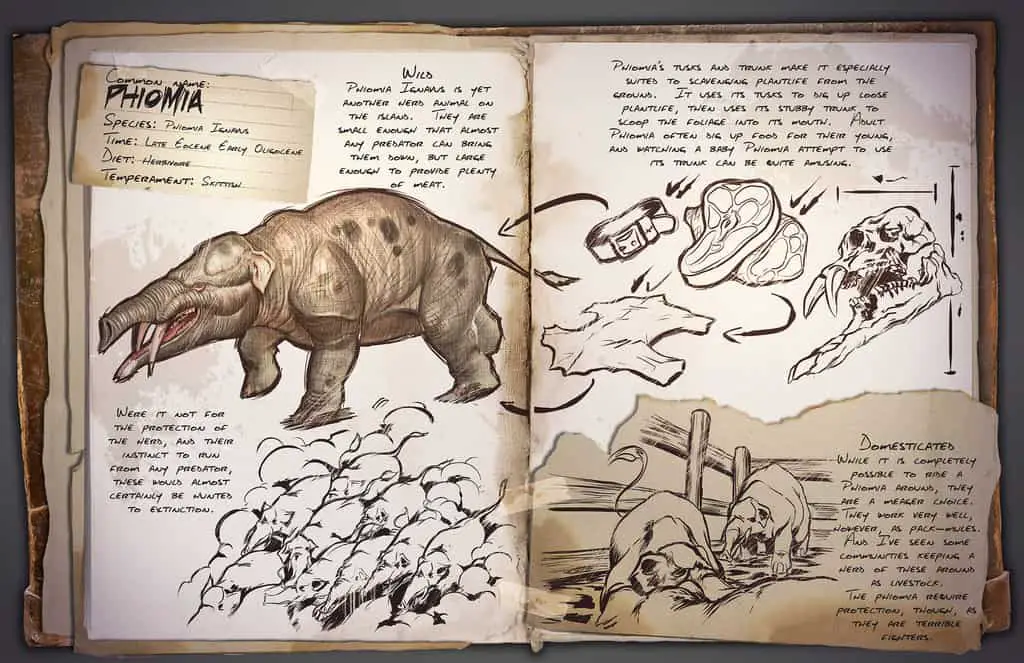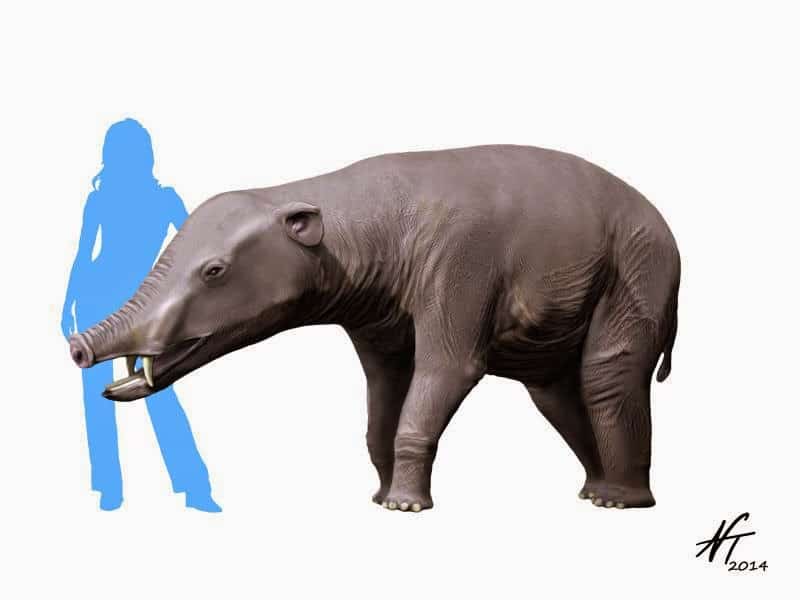Quick Phiomia Facts
- Lived during the Late Eocene Period to the Early Oligocene Period
- Lived all over Africa and Eurasia
- Was as tall as an Asian elephant
- Was as long as a rhinoceros
- Weighed less than an Asian elephant
- Was an herbivore
About Phiomia
Phiomia is a prehistoric proboscid which lived approximately 36 to 30 million years ago during the Late Eocene Period to the Early Oligocene Period. It was first discovered at the end of the 19th century and was named in 1902 by Andrews & Beadnell. Its name means “saw-toothed animal of Fayum.”
Looking at Phiomia pictures, you’d never come to the conclusion that it was related to elephants in any way. It had a short trunk, shovel-like tusks and looked more like a pig with an elongated snout than it looked like an elephant. However, that would have been a very large pig because Phiomia was about 8.2 feet at the shoulders. Which means it was over 2 feet taller than the average human male. It was also approximately 9 feet long and probably weighed in excess of 5 tons. Making it just a little smaller than a modern elephant.
One of the most interesting facts about Phiomia is that scientists once believed that animals with a lower tooth structure like what Phioma possessed used its tusks to dig up plants and roots. However, modern paleontologists now believe that these animals used their lower tusks to strip the bark off of trees.



























